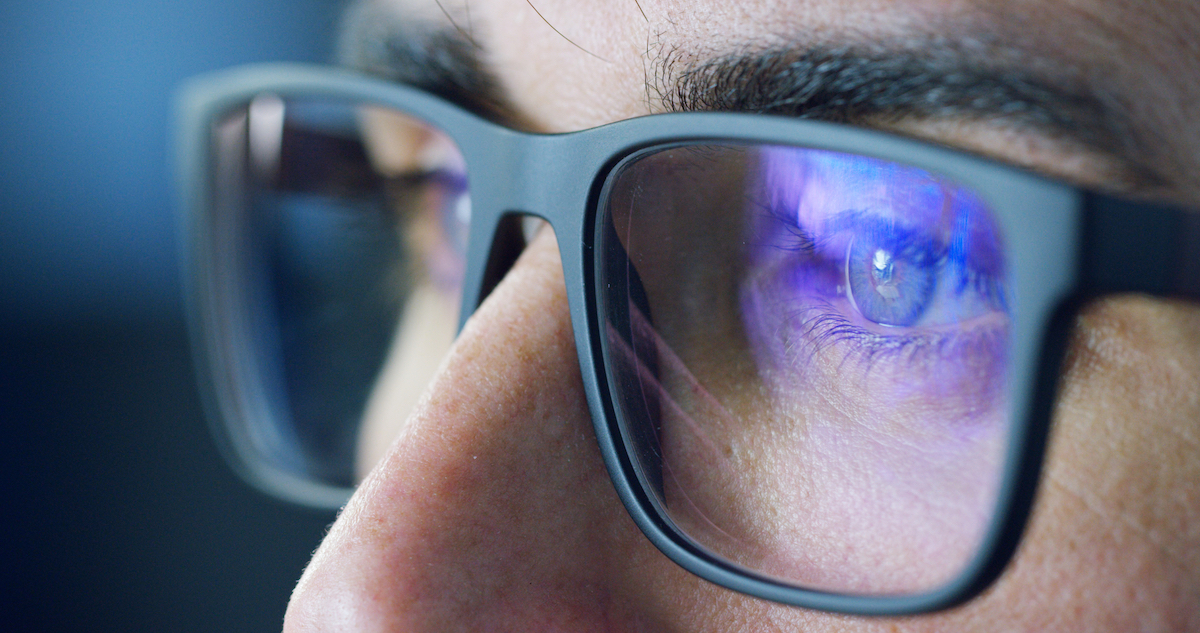
Harvard Research Confirms E-Paper Displays Easier On Eyes
March 14, 2023 by Dave Haynes
I doubt eye strain is much of a factor when end-users and their solutions providers make choices about screens to use for digital signage jobs, but it is still interesting to see peer-reviewed research that confirms e-paper displays are much easier on the eyes than LCD and LED displays.
A study on the effects of displays on human retinal cells, done by the T.H. Chan Harvard School of Public Health, found that displays with brighter, bluer (or cooler) light cause higher levels of stress on retinal cells. Commissioned by E Ink, the research backs up what the e-paper manufacturer has long been saying about its product versus more conventional display technology.
Full details of the study can be found at the Journal for the Society of Information Display: http://doi.org/10.1002/jsid.1191.
Promoting the research results, E Ink’s PR notes:
The average adult spends about 13 hours a day behind a screen, according to Nielsen. All of this screen time comes with a price: high-energy blue light, found in standard liquid crystal displays (LCD) and LED screens, is potentially harmful when emitted into the eyes for hours at a time.
Blue light poses a hazard to retinal cells in the eye, and exposure to blue light near bedtime reduces levels of the sleep-inducing hormone melatonin, disrupting the circadian rhythm and restorative sleep. The key takeaways from the Harvard study include:
- Spectra of light from displays is a leading trigger for stress on retinal cells.
- Retinal cells stressed by blue light produce “reactive oxidative species” (ROS), which can accumulate during prolonged times of viewing, thereby leading to photo-oxidative retinal damage.
- Devices including E Ink’s ComfortGaze front light were up to three times less stressful for retinal cells than LCD devices.
- Color temperature settings can impact stress levels on retinal cells, but LCD color adjustments to day or night mode are less effective than using lighting solutions with spectra engineered for eye safety.
- E Ink devices without a front light do not emit any blue light to stress retinal cells.
“Existing recommendations for blue light safety of displays are based on the spectrum of the light they emit. This study sought to measure the actual response of retinal cells when exposed to commercially available displays,” said Dr. Rick Rogers, Principal Research Scientist of the BioMedical Imaging Laboratory, T. H. Chan Harvard School of Public Health, now the Director of Research at the BioInnovations Institute, Natick, MA.
The study compared two different kinds of displays: LCDs and ePaper displays with front lights. LCDs and ePaper have a key difference in the manner they use light. In order to view an image on an LCD screen, the displays use a backlight, usually LED based, to push light through the LCD material. In contrast, E Ink’s ePaper displays are just like paper: they do not emit any light. Instead, they reflect the ambient light to illuminate the display. In dim or dark situations, when there is not enough light for reading, ePaper displays employ front lights, which perform the role of a built-in booklight.
In the study, ePaper devices were tested with different types of front lights: a cold-white, a warm-amber, and the new E Ink ComfortGaze front light. ComfortGaze was engineered to reduce the amount of blue light reflected off the surface of the display, providing further comfort while reading with a lower blue light spectral output and a light output that is less amber in hue.
The study found significant differences between the “color temperature” of the LEDs being used, with “cool” daylight mode having a blueish-white, and “warm” nightlight mode having an amber appearance. The exception was ComfortGaze, which reduces hazardous blue light output without creating an amber-white tint in nightlight mode. Devices with E Ink ComfortGaze in warm-white mode can be used three times as long as an LCD in cold-white mode, and twice as long as that same LCD in warm-white mode, before reaching the same level of ROS stress in retinal cells (as LCDs).
ePaper displays without front lights show advantages even when compared to print paper. Bright white paper contains fluorescent brighteners, which are not contained in E Ink displays. These brighteners produce not only the clean blueish brilliant white of print paper, but also increase blue light reflection. In other words, E Ink displays can be considered safer for your eyes than print paper.
“In today’s digitally connected world, it’s often difficult to reduce the amount of time spent using screens, but not all displays are built the same,” said Lynne Garone, Associate Vice President of E Ink. “Parents are increasingly worried about the time their children spend both in school and in leisure using displays. Shifting a portion of screen time to a healthier display for reading and writing allows us to remain connected without sacrificing eye health.”



Leave a comment